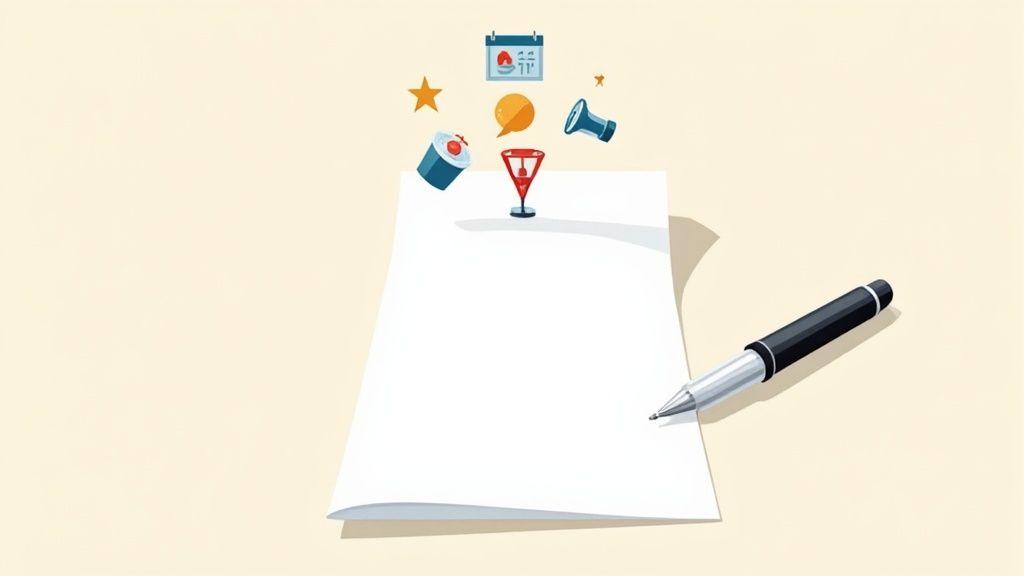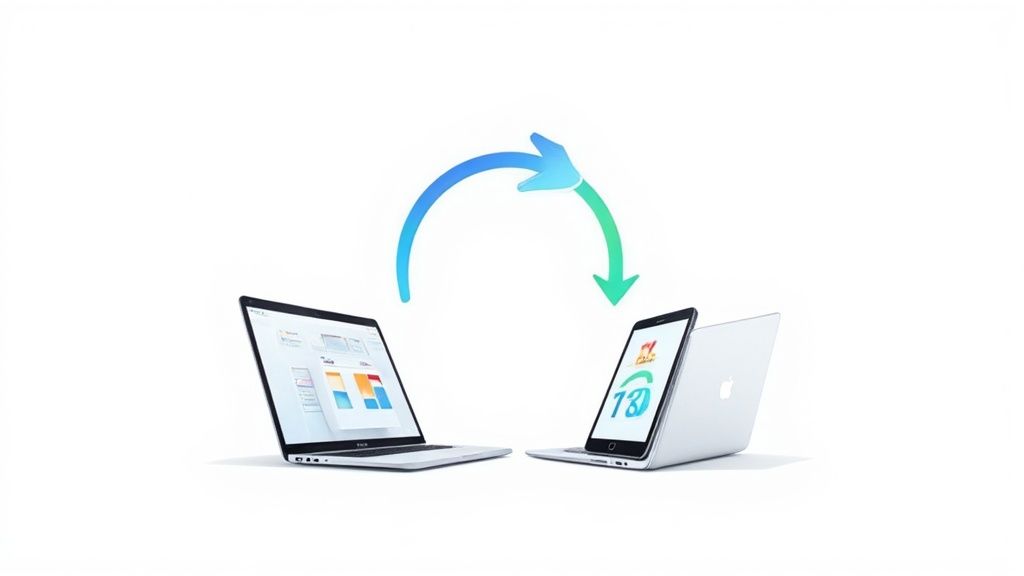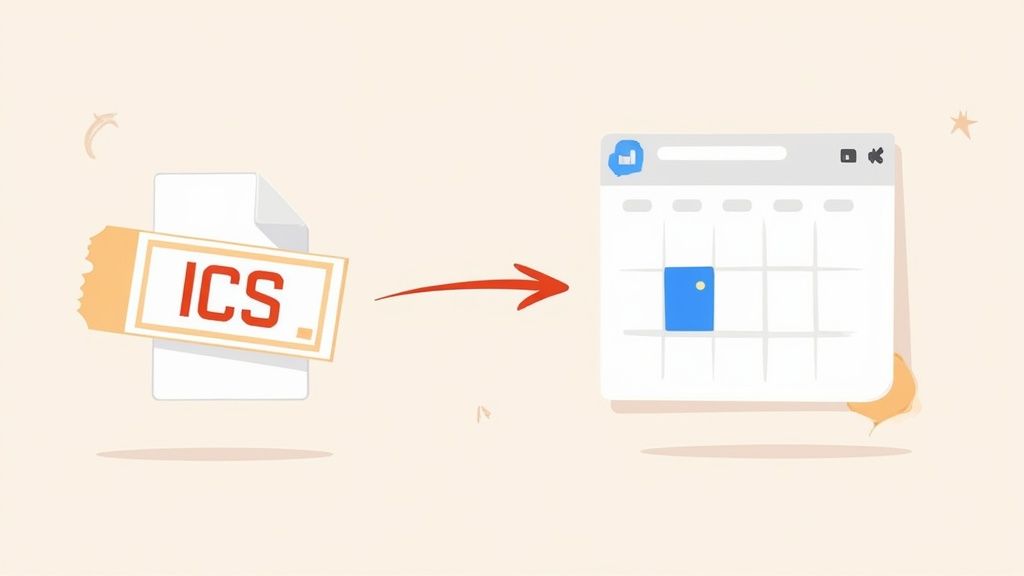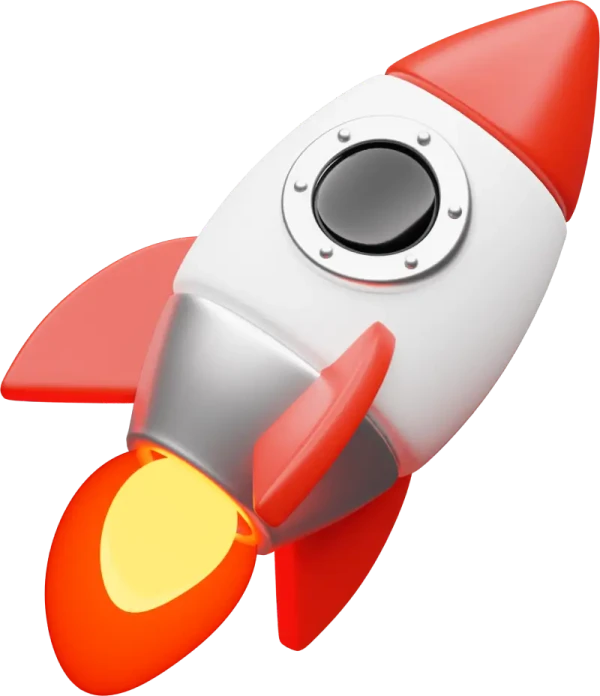Let’s be real. The idea of a "press release" probably conjures up images of a stuffy, formal document blasted out into the void. That's the old way.
Today, a successful event press release is a strategic tool. It's a carefully crafted story designed to grab the attention of journalists who are buried in pitches and inspire them to actually share your news. Think of it less like a broadcast and more like a conversation starter - giving a reporter all the puzzle pieces they need to build a compelling story about your event.
Before you type a single word, you need a blueprint. Every piece of the press release has a specific job. When they all work together, you get an announcement that’s both professional and genuinely persuasive.
The whole process really boils down to three key phases: gathering your essential event details, writing and formatting the release, and then getting it to the right media contacts.
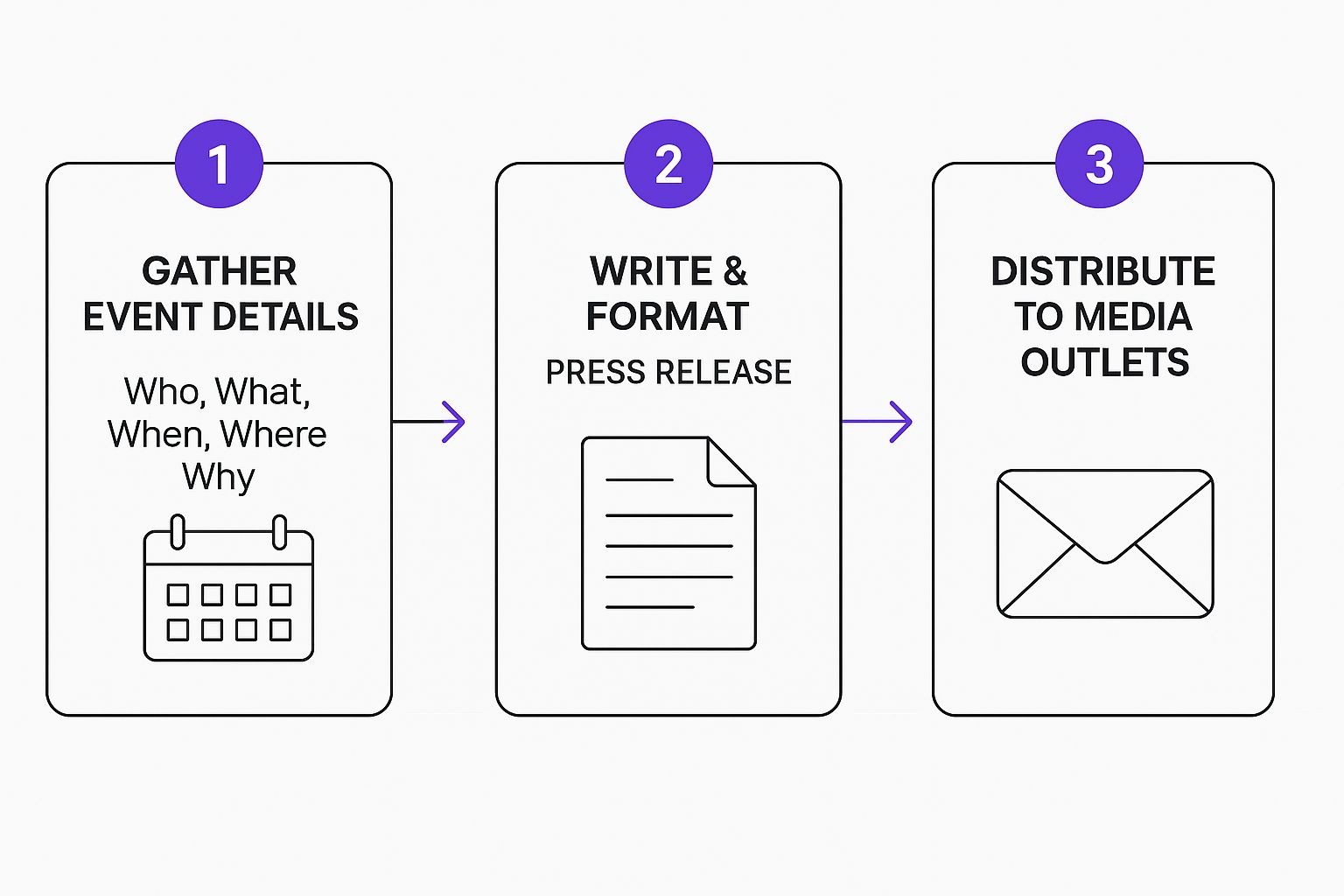
This visual just hammers home a simple truth: a great press release is built on a solid foundation. You need clear info and thoughtful execution long before it ever lands in an inbox.
Mastering the Inverted Pyramid
If you remember only one thing from this guide, make it the inverted pyramid. This is a non-negotiable principle of journalism. It means you put the most critical, newsworthy information right at the very top. From there, you gradually flow into more specific details and finish with general background info.
Why is this so important? Journalists get hundreds of emails a day. They don't have time to read to the bottom of your release to find out what's going on. They scan the first few sentences to decide if a story is worth their time. If your main point isn't immediately obvious, your press release is getting deleted. It's that simple.
By putting the most critical details - the who, what, when, where, and why - in the very first paragraph, you're respecting a journalist's time. This single move dramatically increases your chances of getting noticed. It's the ultimate hook.
This structure forces you to be disciplined. You have to pinpoint what truly makes your event newsworthy. Is it a famous keynote speaker? A groundbreaking product launch? A massive community impact? Whatever your angle is, that’s your lead.
The Key Components of an Effective Press Release
Every modern press release needs a few essential elements. They provide a professional framework that media contacts expect to see, making their job (and your life) easier.
To help you get started, here's a quick-reference table that breaks down the essential parts of any press release.
Quick Guide to Press Release Components
| Component | Purpose | Key Tip |
|---|---|---|
| Headline | Grab attention and state the core news value instantly. | Make it active, specific, and compelling. Think like a news headline, not a title. |
| Dateline & Intro | Set the scene (City, State - Date) and answer the 5 Ws. | Get straight to the point. The first paragraph should tell the whole story in brief. |
| Body Paragraphs | Provide supporting details, context, and quotes. | Use quotes to add a human element. Back up claims with stats or specifics. |
| Boilerplate | Give a short, standard overview of your organization. | Keep it concise and consistent across all your press materials. |
| Media Contact | Make it easy for journalists to ask questions or get more info. | Include a name, title, email, and direct phone number. Don't use a generic inbox. |
Getting these building blocks right is the first step toward crafting a release that doesn't just announce your event but actively sells it as a story worth telling.
Crafting a Headline That Earns the Click
Let's be blunt: your headline is the most important sentence in your entire press release. It's the gatekeeper.
A journalist might give you less than three seconds before deciding whether to open your email or send it straight to the trash. That snap judgment? It hinges almost entirely on the power of those first 10-15 words. A weak headline guarantees your hard work disappears without a trace.
Think of it as the subject line for the most important email you'll send all month. It has to be active, compelling, and scream "newsworthy." This isn't the place for vague marketing fluff; it's for hard-hitting news.
Finding Your Unique Angle
Before you can even think about writing a headline, you have to figure out what makes your event a story. What's the hook?
Announcements like "Company X Announces Annual Conference" are dead on arrival. You've got to dig deeper and find the one thing that will actually spark a journalist's curiosity.
Ask yourself, what's the most compelling part of this event?
- Is it a big-name speaker? "Bestselling Author Jane Doe to Keynote the Future of Work Summit" is a world away from a generic event announcement.
- Is it a major new partnership? "Tech Innovators Spark & Forge Announce Groundbreaking Partnership at Ignite 2024" tells me something important is happening in the industry.
- Is it a community milestone? "Local Charity Gala Aims to Raise Record-Breaking $100,000 for Children’s Literacy Programs" gives the story an emotional, impactful angle.
Once you nail down your angle, the headline almost writes itself. This forces you to lead with real value, not just basic information.
The Art of the Powerful Headline
A great headline distills your core message into a short, powerful statement. It's a careful mix of information and intrigue. The goal is to make a journalist think, "Okay, I need to know more about this."
Here are a few principles we always stick to:
- Use Active Verbs: Active verbs create a sense of urgency and importance. Words like "Unveils," "Launches," "Hosts," and "Partners" have a punch that passive phrases just don't.
- Be Specific and Use Numbers: Specifics add instant credibility. Instead of "Tech Conference Announces New Speakers," try "FutureForward Tech Summit Unveils 5 Industry-Leading AI Pioneers as Keynote Speakers." The numbers and descriptive terms make it feel real.
- Keep it Tight: You're aiming for a headline that's clear and easy to scan. We try to keep it under 100 characters if possible - that also makes it perfect for sharing on social media.
The best headlines we see are the ones that could be pulled directly from a news article. They're factual, direct, and immediately tell the reader why they should care. This isn't just about being creative; it’s about clarity and impact.
Summarizing the Story in the First Paragraph
Once your killer headline has done its job, the opening paragraph has to deliver on that promise - immediately. This is where the old-school inverted pyramid structure is your best friend. Your very first sentence, the lead, has to summarize the entire story.
This lead paragraph needs to quickly answer the five Ws:
- Who: Your organization and any key partners or speakers.
- What: The name and core purpose of the event.
- When: The date(s) of the event.
- Where: The physical venue or virtual platform.
- Why: The newsworthy reason this is all happening.
The real trick is to pack all of that critical info into the first 25-35 words. A busy editor should be able to grasp the whole story at a glance without reading another word. It shows you respect their time and gives them the core facts to start building their own story.
For a closer look at how to structure these opening lines, our guide on a complete press release for an event sample has some excellent real-world examples.
By zeroing in on a strong, newsworthy angle and summarizing it perfectly in your headline and lead, you set yourself up for success. You’ve passed the first test and earned the right to have the rest of your press release read.
Building the Body with Compelling Details
You’ve hooked them with a killer headline and a tight lead paragraph. That opens the door. Now, the body of your press release needs to deliver on that promise, turning a simple announcement into a story a journalist can actually use. This is where you flesh out the details, give some context, and add that human element that makes your event stick.
Think of it this way: the intro gave the core facts, but the body provides the texture. It’s where you prove your event is as newsworthy as you claimed.
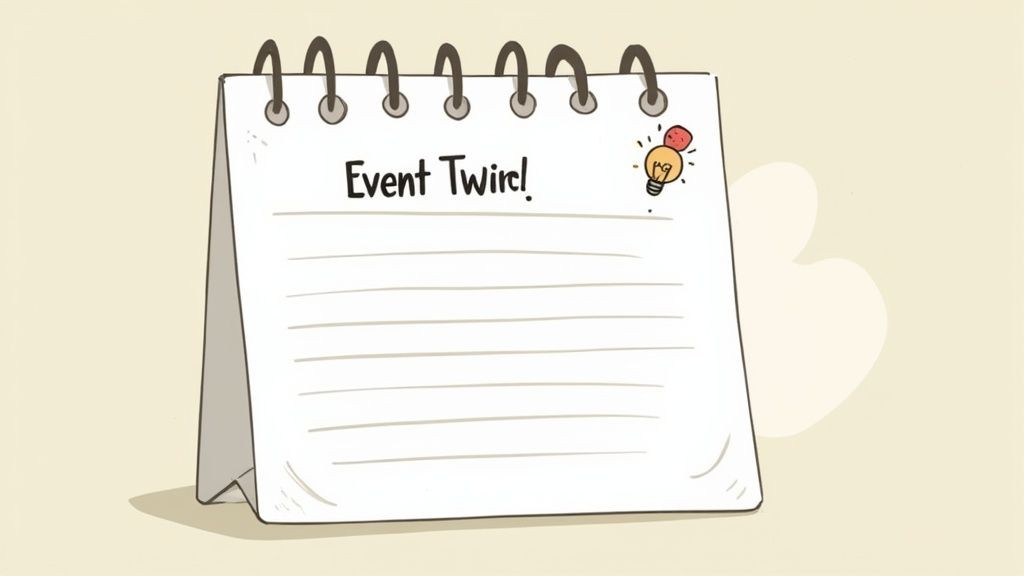
Weave in Powerful Quotes
Want the fastest way to breathe life into a dry announcement? Add a direct quote from someone important. It instantly adds a human voice and a layer of credibility that plain text just can't match. A good quote can offer perspective, inject some genuine excitement, or frame why the event matters in a more personal way.
So, who should you quote?
- Your CEO or Founder: Perfect for the high-level vision - how the event impacts the industry or community.
- A Keynote Speaker: This is great for generating buzz and borrowing their authority to boost your announcement.
- An Event Organizer: They can share the passion behind the event and drop specific details about what attendees will experience.
A strong quote does more than fill space; it's a ready-made soundbite for journalists. You're saving them a step, which makes your story much more appealing to cover.
Back Up Your Claims with Data
Beyond personal insights, you need some hard data. Numbers are powerful - they can show growth, highlight a problem your event is solving, or just demonstrate the sheer scale of your gathering.
Don't just say your event is "popular." Instead, say "last year's event drew over 2,500 attendees from 30 countries." See the difference? That kind of specificity gives reporters tangible facts to build their articles around. If you're launching a new product at the event, drop a key stat about the market it's entering. Context is everything.
The body of the press release is where you build your case. Use a mix of storytelling, powerful quotes, and supporting data to create a complete package that is not just informative, but also genuinely persuasive.
Enhance Your Story with Multimedia
Let's be real: in today's media world, a text-only press release just feels incomplete. Including multimedia isn’t a bonus anymore; it’s an expectation. High-quality visuals can dramatically increase how many people see and pick up your story.
What kind of assets tell your story best?
- High-Resolution Photos: Think professional headshots of speakers, great shots from past events, or photos of the venue.
- Company Logos: Make it dead simple for the media to brand their coverage correctly.
- Video Links: A short event trailer or a clip from a keynote speaker can add a really dynamic element.
When you write the body, you're also building a resource kit for journalists. By linking to a media kit with all these assets ready to go, you're removing friction and giving them everything they need to produce a rich, engaging story. It just looks more professional.
The sweet spot for press release length has also shifted. The average event press release in 2025 is expected to hover around 400 words, with the best media pickup rates falling between 300 and 500 words. Releases in this range often see pickup rates above 50%. This is driven by digital reading habits; 64% of PR pros now use AI to refine formatting, and the 63% of companies including multimedia consistently see better results.
Crafting a compelling story is a skill that goes beyond just the press release. For more help on creating engaging narratives, check out our article on powerful event description examples. Focusing on these rich details is what will make your announcement stand out from the crowd.
Getting Them to Show Up: Event Details and CTAs That Convert
You’ve done the hard part. Your press release grabbed a journalist’s attention, told a great story, and now they’re actually interested. But interest doesn't fill seats or boost webinar attendance. Now comes the most critical part: turning that flicker of interest into a real-world action.
This is where your event logistics and a punchy call to action (CTA) steal the show. Without them, even the most compelling press release is just a memo floating in the digital ether.
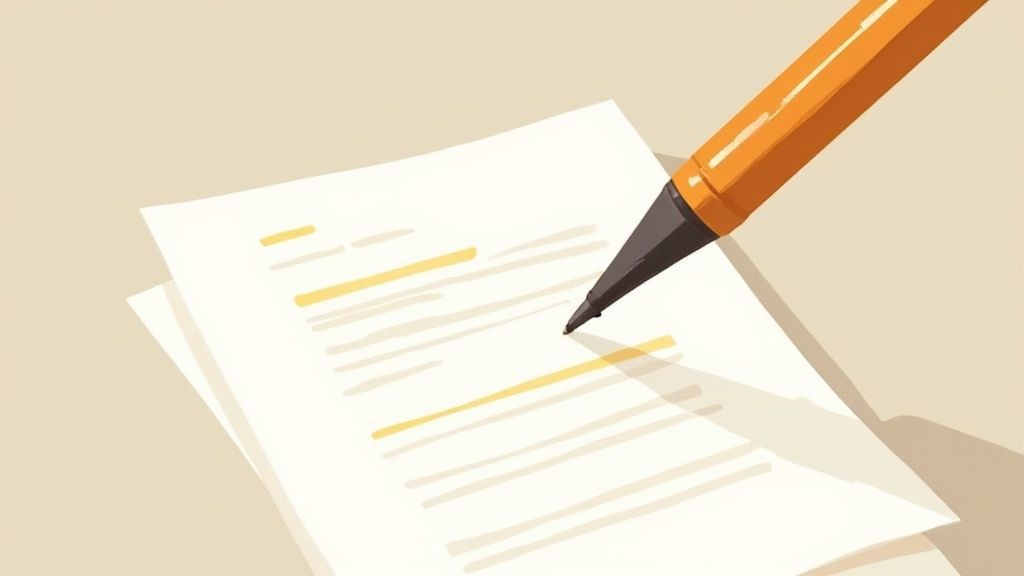
Nail the Logistics Down Cold
Let's be blunt: ambiguity is the enemy of attendance. A journalist on a deadline won't waste time trying to figure out your event details. You need to make everything crystal clear and impossible to misinterpret.
We always recommend formatting these core details in a separate, easy-to-scan section. Think bullet points. Make it so simple they can copy and paste it directly into their own article.
Every time, you absolutely must include:
- Date and Time: Be painfully specific. "Tuesday, October 26, 2024, from 9:00 AM to 5:00 PM EST." That time zone is non-negotiable, especially for virtual events drawing a global crowd.
- Venue: For an in-person event, list the full street address. If it’s a landmark venue everyone knows, mention that, too.
- Virtual Access: Don't make people dig. Provide a clean, direct link to the event page or virtual platform.
Making a reporter's job easier is one of the fastest ways to get accurate, positive coverage. Don't make them work for the basic facts.
Write a Call to Action That Actually Calls for Action
A call to action isn't a gentle suggestion. It’s a direct order. A weak, passive CTA like "Learn more" is a dead end. You need something active, specific, and laser-focused on your goal.
Remember who you're writing for - the media. While the general public might stumble upon your release, your primary target is the journalist. Your CTA should be a tool for them.
Here are a few CTAs that have worked well for us:
- "To register for a complimentary media pass, please contact Name at Email." This is a high-value, direct offer that journalists appreciate.
- "Access the full media kit, including high-resolution images and speaker bios, here: Link." You're giving them everything they need to build a story. It's a godsend.
- "To schedule an interview with Key Speaker, please reach out to our media contact below." This opens the door for much deeper, more valuable coverage.
Your CTA is the bridge between your announcement and your event's success. Make it specific, direct, and focused on providing value to the media. Tell them exactly what to do next, and make it easy for them to do it.
Think Beyond the Press Release
The journey doesn't stop once a journalist clicks your link. That CTA should lead to a dedicated event landing page that feels like a natural next step, a place where general interest can be converted into confirmed attendees.
But here’s a pro tip: getting someone to register is only half the battle. Life gets busy, notifications get silenced, and events get forgotten. The gap between registration and attendance is where you lose people.
This is where a simple tool on your event page can make a massive difference. We built our service, Add to Calendar PRO, specifically to solve this problem. By placing a simple "Add to Calendar" button on your registration confirmation page, you give attendees the power to instantly save the date to their Google, Outlook, or Apple Calendar.
It’s such a small thing, but it’s powerful. That passive registration becomes an active, unmissable appointment on their personal calendar. It's an automated reminder that dramatically boosts show-up rates. By thinking through the entire journey - from press release to calendar entry - you build a system that drives real, measurable results.
Finalizing Your Release and Distribution Strategy
You've done the hard work. You've crafted a compelling story, packed it with killer quotes, and nailed down all the event details. But don't pop the champagne just yet. Now comes the part that makes or breaks your entire effort: getting your press release into the right hands.
A brilliant press release that nobody reads is just a well-written document. An intelligent distribution strategy is what turns that document into actual media coverage. This is where we move from the writing desk to the launchpad.
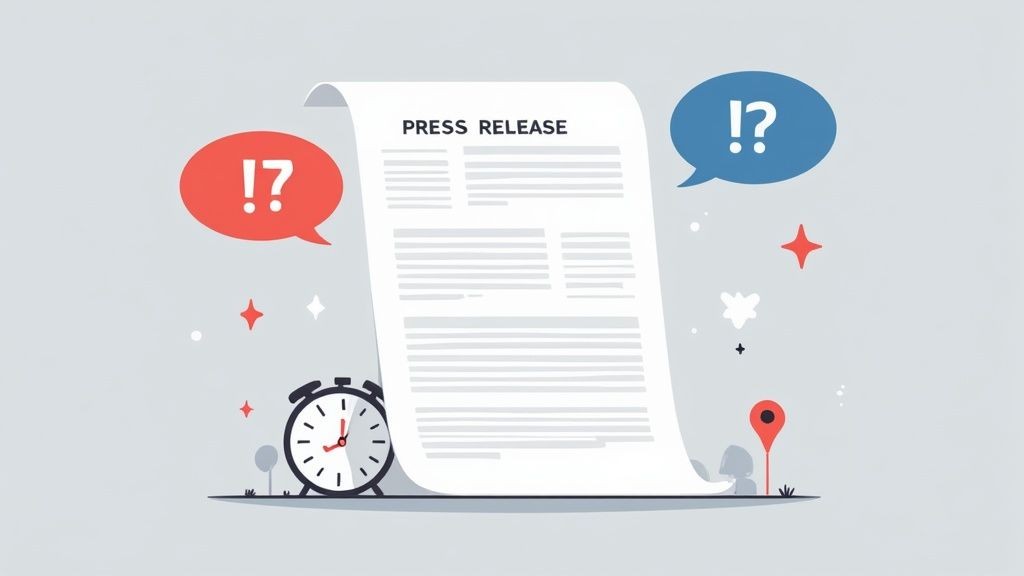
Polish with a Professional Boilerplate
Before you even think about hitting send, there are two non-negotiable elements you need to tack on the end: your boilerplate and media contact info.
The boilerplate is just a short, standardized paragraph about your company. Think of it as your "About Us" elevator pitch. For a journalist who's never heard of you, this little block of text provides instant context and credibility. Keep it consistent everywhere.
Right after that, you absolutely must include a clear media contact. This can't be a generic info@ email address. You need a real person - name, title, direct email, and phone number. Journalists are on crushing deadlines. They need a direct line to someone who can actually answer their questions, not a black hole of an inbox.
Building Your Targeted Media List
The old "spray and pray" method of blasting a press release to a massive, generic list of contacts is dead. Not only is it a waste of time, but it's also a great way to get your domain flagged as spam. Success today is all about precision.
Your real mission is to build a curated list of journalists, bloggers, podcasters, and influencers who actually care about your industry or event.
- Who already covers your niche? Start with publications and writers in your industry or local community.
- Find the right people. Don't just target the publication; find the specific writers who have covered similar events before.
- Make it personal. A generic email gets deleted. Mention a recent article they wrote. Show them you've actually done your homework.
We'll say it again: a small, hyper-targeted list of 20 relevant contacts who get a personalized pitch will blow a generic blast to 2,000 out of the water. Every single time. It's about quality, not quantity.
Timing Your Send for Maximum Impact
When you send your press release is almost as important as what you send. Get the timing wrong, and it’s buried in an avalanche of other emails. There's no magic formula, but there are definitely some proven best practices.
The sweet spot is usually Tuesday, Wednesday, or Thursday. Mondays are a chaotic catch-up day, and by Friday, everyone's mentally checked out for the weekend.
As for the time? Aim for between 10 AM and 2 PM in the recipient's local time zone. This sweet spot avoids the morning email rush and the classic post-lunch slump.
It's also worth noting how much the event landscape has shifted since 2020. With 35% of events now being virtual and another 5% hybrid, your release has to speak to that. Highlighting accessibility and streaming options can attract a global audience. For example, knowing that 72.5% of organizers credit their event platform for success and 44% of attendees prioritize tech that makes consumption easier gives you powerful angles to include.
Distribution Services vs Direct Outreach
So, how do you actually send it? You've got two main routes: a wire service (like PR Newswire) or good old-fashioned direct outreach.
A wire service gives you massive, instant distribution. It's great for getting your news indexed by search engines and reaching thousands of outlets at once. The downsides? It’s impersonal and can be pretty expensive.
Direct outreach, on the other hand, takes time. But it allows for the kind of personalization that builds real, lasting relationships with the media. For most small to medium-sized events, a targeted, direct approach is going to give you much better results.
Ultimately, a multi-channel strategy is the key to success. For a much deeper dive into this, check out our guide on how to promote an event online.
Common Questions (and Straight Answers)
Even with the best template in hand, a few questions always seem to pop up right when you're ready to hit "send." It happens. Think of this as your quick-reference guide for those last-minute hurdles and "what if" moments that can trip up even seasoned pros.
Let's cut through the confusion and get you some clear, direct answers.
What’s the Best Day and Time to Send a Press Release?
While there's no single magic window that works for every industry, the data doesn't lie. You'll generally see the best results sending a press release on a Tuesday, Wednesday, or Thursday. Mondays are a chaotic mess of catching up, and by Friday afternoon, most journalists are already thinking about the weekend.
The sweet spot for timing is usually between 10 AM and 2 PM in the recipient's local time zone. This helps you dodge the initial morning email avalanche and the post-lunch slump. That said, always be mindful of your specific industry. If a major trade blog publishes its big stories every Tuesday morning, timing your release to coincide with that can give you a serious advantage.
How Do I Actually Find the Right Media Contacts?
This is where the real work comes in, and it's probably the most critical part of the whole process. Blasting your news to a generic list is a guaranteed way to get ignored. Don't do it.
Instead, start by identifying the specific publications, blogs, and even influencers who cover your niche or local scene. Use tools like LinkedIn and Twitter to find the individual reporters who have written about events just like yours. Dig for their direct email addresses - a personalized pitch is infinitely more powerful than one sent to a generic editor@ inbox.
The secret is all in the personalization. A small, carefully researched list of 20 relevant contacts will always, always outperform a massive, generic list of 2,000. Mention a recent article they wrote to prove you've done your homework.
What Should I Put in a Media Kit?
A good media kit (or press kit) makes a journalist's life so much easier, which dramatically increases your odds of getting coverage. This should just be a simple digital folder - hosted on Google Drive or Dropbox - that you link to directly in your press release.
Pack it with everything a reporter might need to build their story:
- The Full Press Release: Make it available in both PDF and DOC formats for convenience.
- High-Resolution Images: Think professional headshots of your speakers, your company logo, and maybe some great photos from a past event.
- Event B-Roll Video: If you have it, even a 30-second clip of footage can be gold for broadcast and online media outlets.
- Fact Sheet: A simple one-page document with the key stats about your company, the event, and your main speakers.
Should I Follow Up on My Press Release?
Yes, but you have to do it right. A polite, gentle follow-up is perfectly fine, but your timing and tone are everything. Give them at least 24-48 hours to breathe before you reach out again.
One brief follow-up email is usually all you get. Keep it short and to the point.
For instance, something like, "Just wanted to gently follow up on the press release I sent yesterday about Event Name and see if it was of interest," works perfectly. Whatever you do, never call a journalist unless you already have a solid relationship with them. If you send one follow-up and hear crickets, it’s time to move on.
At Add to Calendar PRO, we know that great media coverage is just the first step. The real goal is getting people to actually show up. By making the journey from announcement to attendance seamless with our powerful 'add to calendar' buttons, we help you turn fleeting interest into confirmed attendees. See how our service can boost your event's success at https://add-to-calendar-pro.com.
